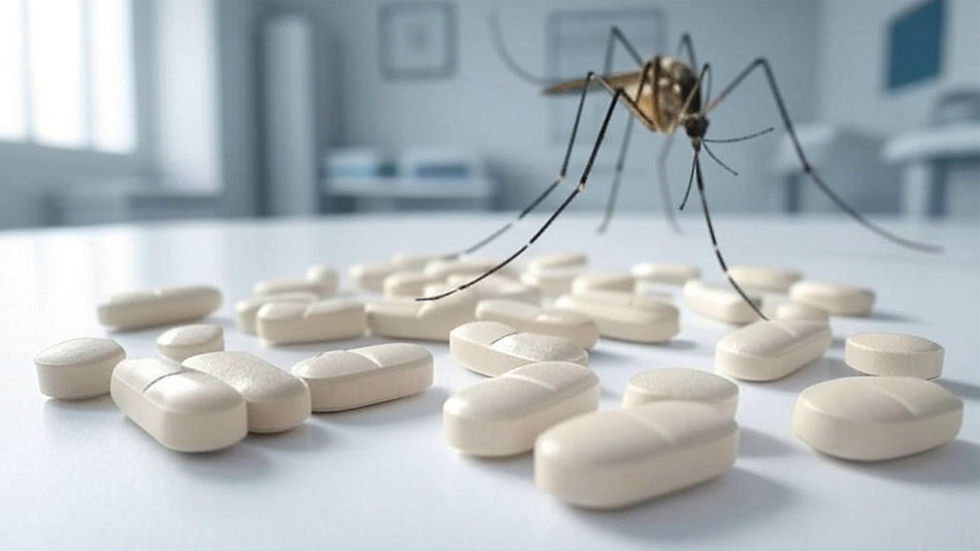Malaria: Symptoms, Prevention, and Effective Medicines You Should Know
- Online Medicine Villa
- May 22
- 2 min read
Fever, chills, and fatigue that won’t go away? In regions where malaria is common, these could be more than just flu-like symptoms. Malaria is a life-threatening disease that still affects millions worldwide, but with the right treatment and preventive care, it can be controlled. Let’s explore how to protect yourself and what medications are most effective.

What is Malaria?
Malaria is a parasitic infection caused by Plasmodium species, transmitted by the bite of infected Anopheles mosquitoes. Once inside the body, the parasite multiplies in the liver and infects red blood cells, causing high fevers and other severe symptoms.
Main Causes of Malaria
Mosquito Bites: The most common mode of transmission through infected mosquitoes
Contaminated Blood Transfusions
Sharing Infected Needles
Mother-to-Child Transmission during pregnancy
Symptoms of Malaria
High fever with shaking chills
Sweating
Headache
Nausea and vomiting
Muscle pain
Fatigue
Anemia
Jaundice (in severe cases)
Malaria symptoms usually appear 10–15 days after the mosquito bite.
Top Malaria Treatment Medicines
1. Artemisinin-Based Combination Therapies (ACTs)
Examples: Artemether-Lumefantrine, Artesunate-Mefloquine
Use: First-line treatment for uncomplicated Plasmodium falciparum malaria
2. Chloroquine
Effective for Plasmodium vivax and sensitive regions
Less effective in areas with resistance
3. Quinine and Quinidine
Used for severe malaria and drug-resistant strains
Often combined with other medications like doxycycline
4. Primaquine
Clears dormant liver forms of P. vivax and P. ovale
Prevents relapses
How to Prevent Malaria
Use mosquito nets and repellents
Wear long-sleeved clothing in high-risk areas
Take preventive medications (like Doxycycline, Mefloquine) if traveling to endemic zones
Avoid stagnant water and clean surroundings regularly
Best Practices During Malaria Treatment
Complete the full course of medicine, even if symptoms disappear
Stay hydrated and rest
Monitor temperature and take antipyretics as prescribed
Avoid self-medication—consult a doctor or healthcare provider
FAQs on Malaria Treatment
Q1. What is the best malaria treatment medicine?
ACTs like Artemether-Lumefantrine are most recommended for P. falciparum. Chloroquine is used for P. vivax.
Q2. Can malaria be cured completely?
Yes, with the right treatment, most malaria cases are completely curable.
Q3. Is malaria contagious from person to person?
No, malaria cannot spread directly from person to person. It requires a mosquito vector.
Q4. How long does malaria medicine take to work?
Fever usually subsides within 48-72 hours after starting treatment.
Q5. Is there a vaccine for malaria?
Yes, the RTS,S/AS01 (Mosquirix) vaccine is available in some countries, primarily for children.
Conclusion
Malaria remains a significant health concern, but with timely diagnosis, the right malaria treatment medicine, and preventive care, it’s completely manageable. Stay informed, stay protected.
Shop Online Medicine Villa for WHO-recommended malaria medicines at global competitive prices. Safe, effective, and delivered worldwide.











Comments